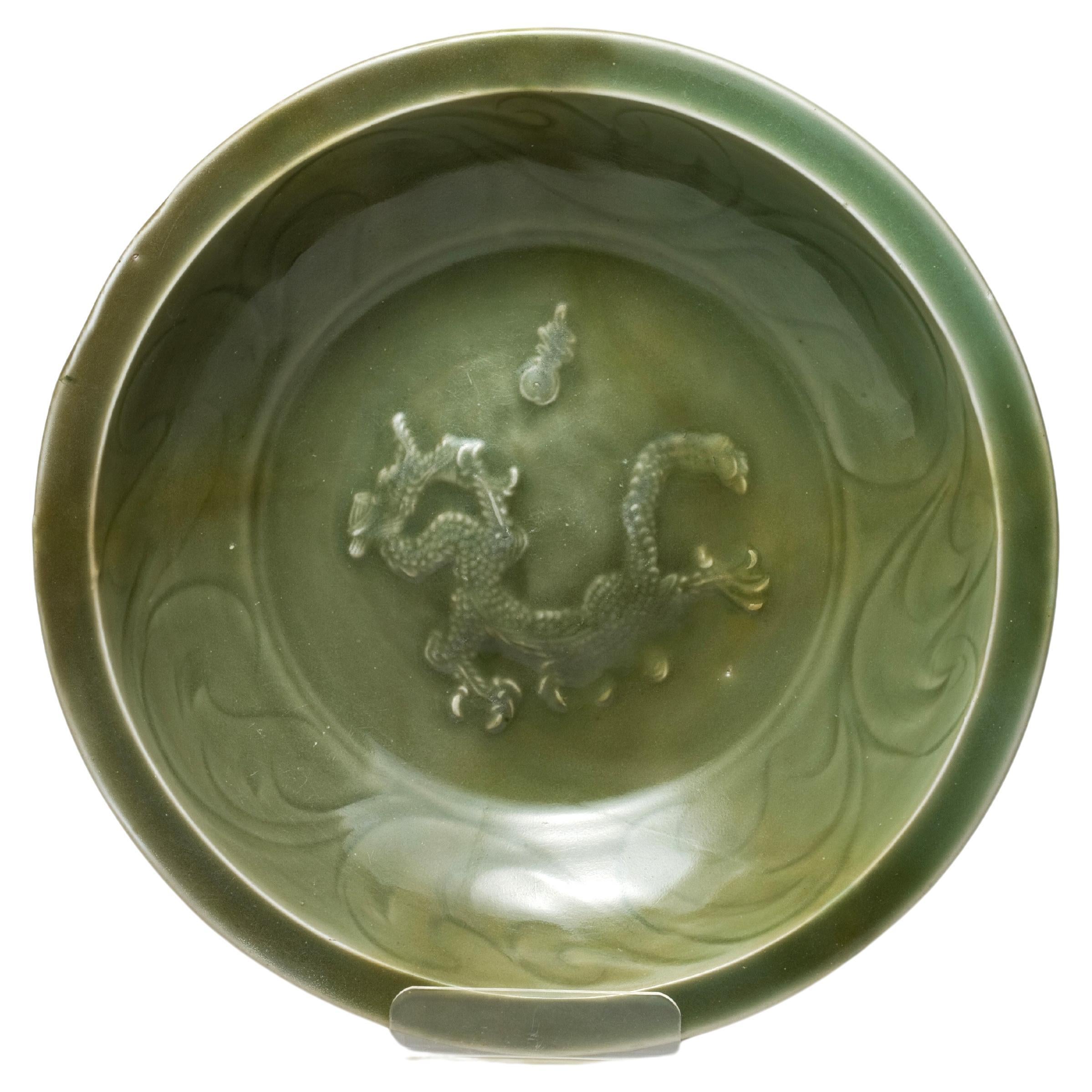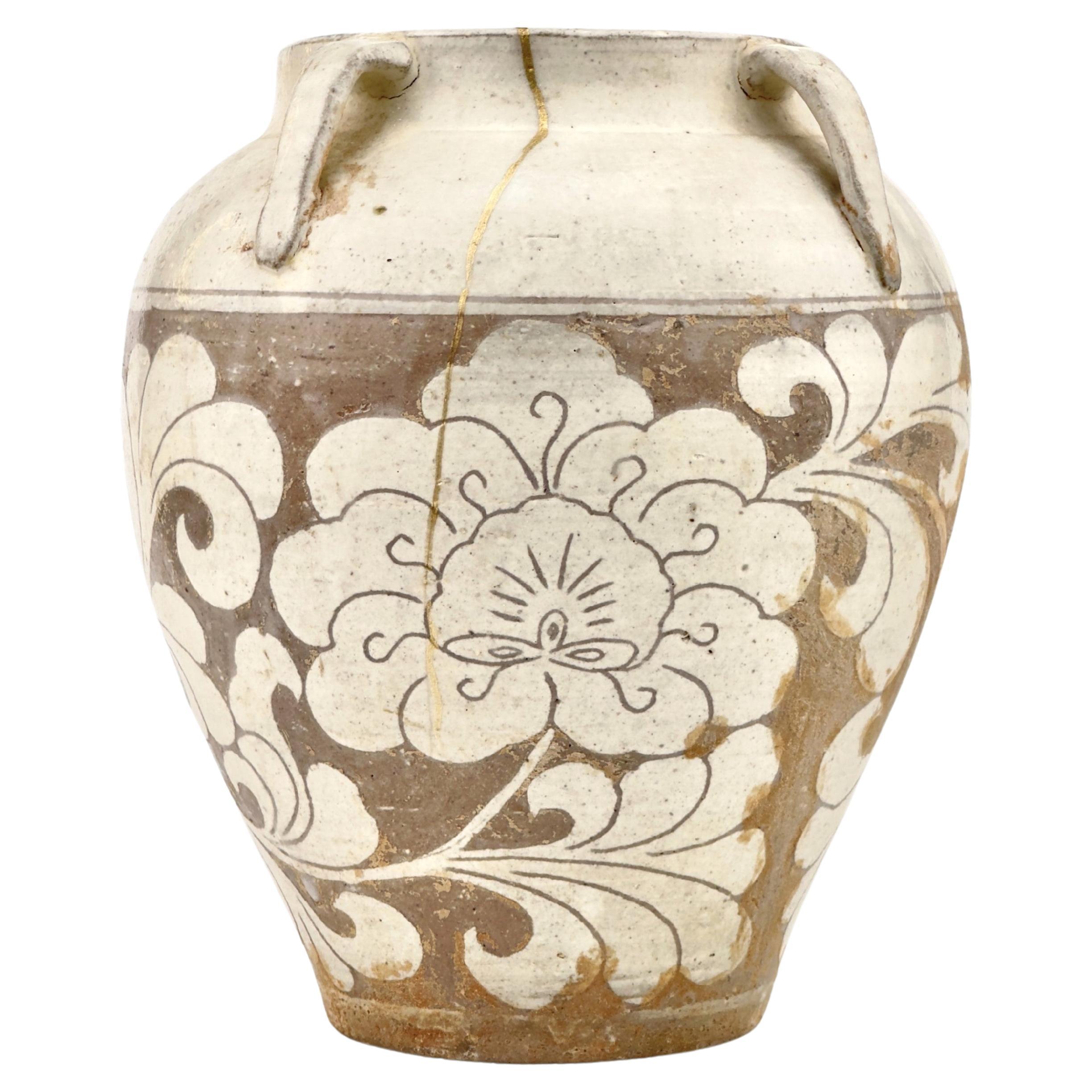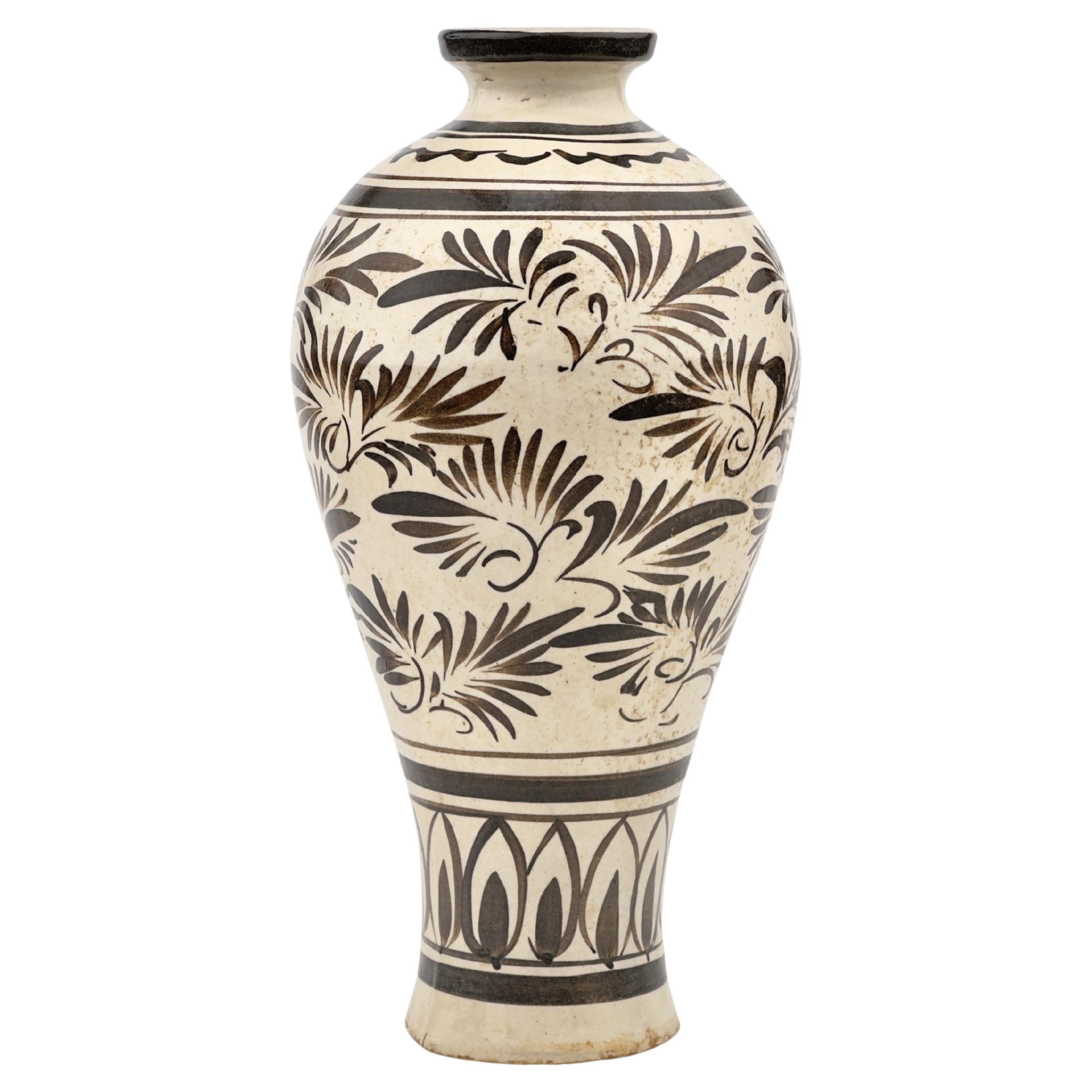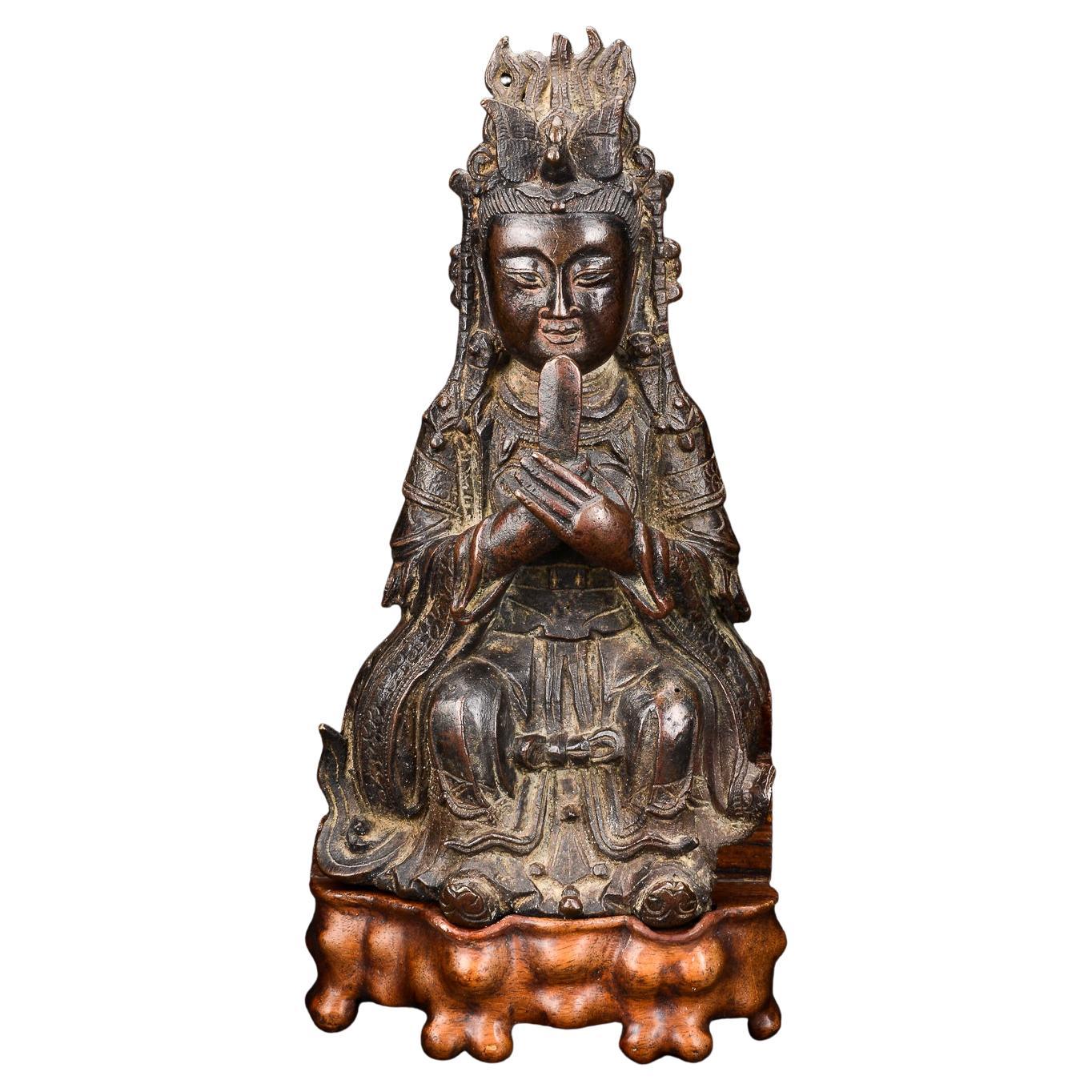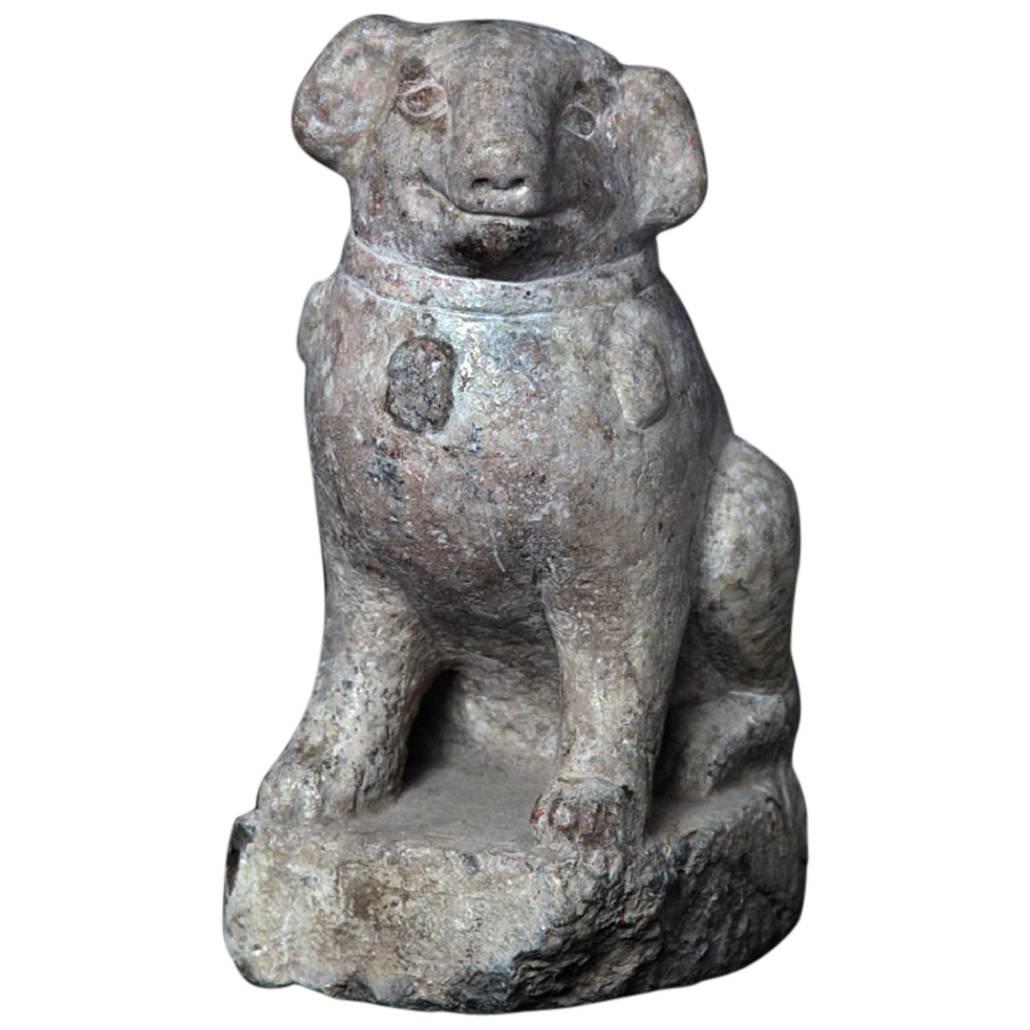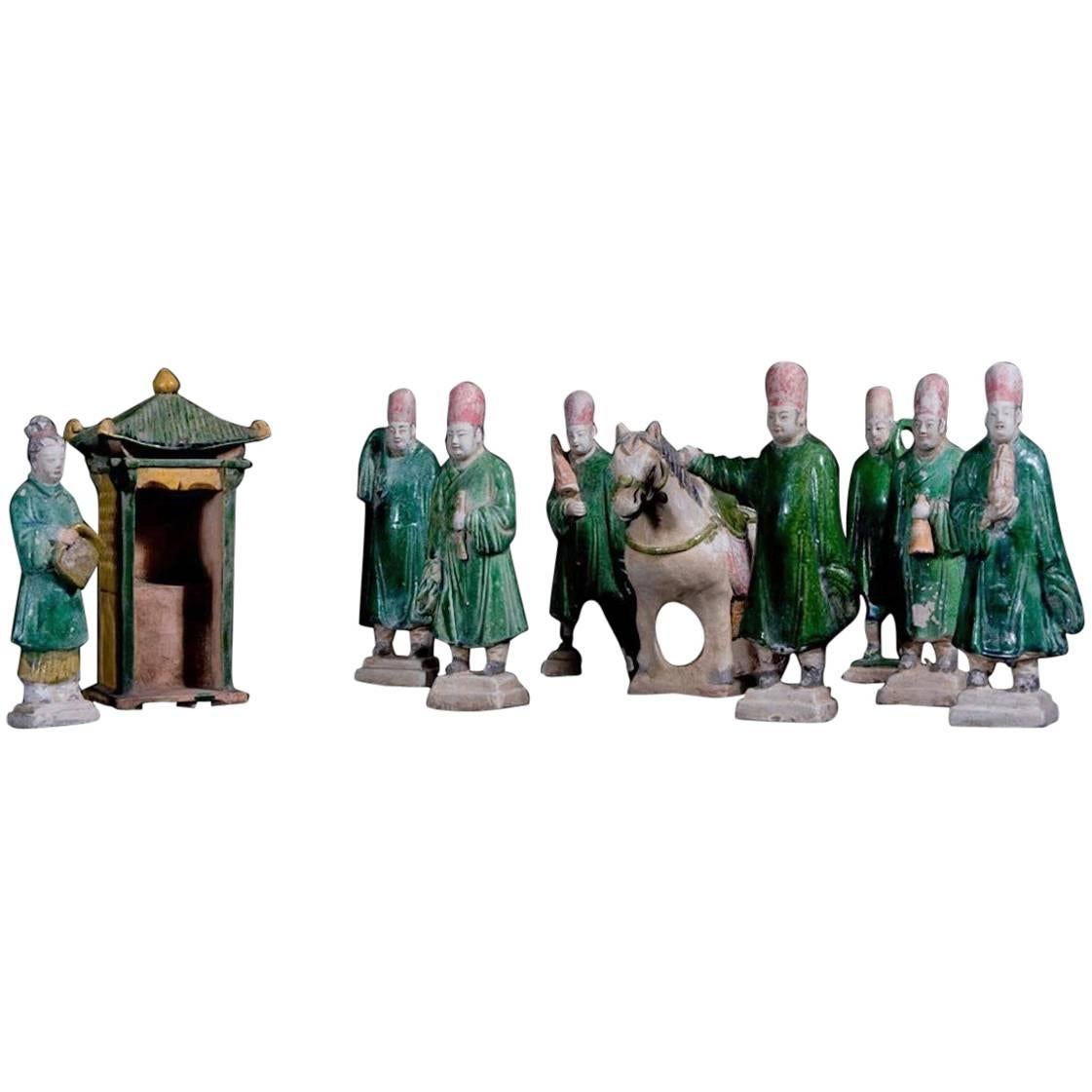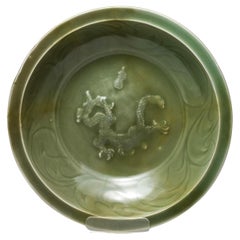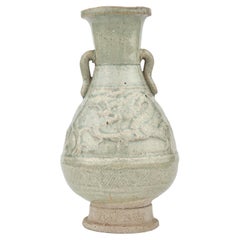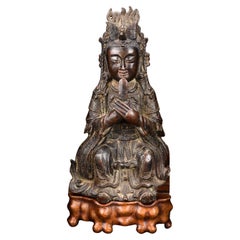
Blue And White 'Dragon' Stem Cup, Yuan Dynasty(1271-1368)
View Similar Items
Want more images or videos?
Request additional images or videos from the seller
1 of 20
Blue And White 'Dragon' Stem Cup, Yuan Dynasty(1271-1368)
About the Item
- Dimensions:Height: 5.12 in (13 cm)Diameter: 3.94 in (10 cm)
- Style:Ming (Of the Period)
- Materials and Techniques:Ceramic,Glazed
- Place of Origin:
- Period:
- Date of Manufacture:1271-1368
- Condition:Repaired: Repairs were made in two places on the top, and the repaired areas were discolored yellow. Minor fading.
- Seller Location:seoul, KR
- Reference Number:1stDibs: LU9577237940192
About the Seller
New to 1stDibs
Joined in the past six months.
4.5
Vetted Seller
These experienced sellers undergo a comprehensive evaluation by our team of in-house experts.
Established in 1999
1stDibs seller since 2023
Typical response time: 1 hour
More From This SellerView All
- A Longquan Celadon-Glazed 'Dragon' Dish, Yuan DynastyLocated in seoul, KRThe dish is decorated to the centre with a moulded appliqué dragon chasing the flaming pearl surrounded by a carved stylised foliage band at the cavetto. The moulded fluted exterior ...Category
Antique 15th Century and Earlier Chinese Ming Antiquities
MaterialsCeladon
- White Ware with two dragons, Yuan Dynasty, 13-14th centuryLocated in seoul, KRThis vase is made from a type of low-fired, porous clay and features a crackled glaze. It bears resemblance to the renowned funerary vases and covers adorned with applied decorations...Category
Antique 15th Century and Earlier Chinese Chinese Export Antiquities
MaterialsCeramic, Porcelain
- Longquan Celadon Figurine, Ming Dynasty (1368-1644)Located in seoul, KRThis sculpture is a Longquan celadon from the Ming Dynasty, renowned for its rich and jade-like green glaze. The figurine is likely a representation of a Buddhist deity or a revered scholar, showcasing the calm aesthetic expressions and graceful contours prevalent during the era. The spectrum of celadon glaze ranges from a dense grey stoneware to a nearly white porcelain texture, with unglazed parts revealing a terracotta brown upon firing. Such pieces were often part of household altars, reflecting the era's spiritual devotion. This artifact would be a treasured exhibit in any museum's Asian art collection, symbolizing both religious reverence and artistic excellence. Period: Ming Dynasty (1368-1644) Region: Longquan, China Medium: Stoneware - Celadon glazed, with a range from heavy grey to almost white porcelain-like material Type: Sculpture Height : 24.5 cm Provenance : Acquired in 1999, Hongkong * Ming Dynasty Longquan Celadon Longquan celadon from the Ming Dynasty typically exhibits a more robust and heavier stoneware body compared to its Song Dynasty predecessors. The Ming era saw an evolution in celadon glaze, achieving a wider spectrum of green hues, from olive to bluish-greens. Ming celadons...Category
Antique 15th Century and Earlier Chinese Ming Antiquities
MaterialsCeladon
- Cizhou Lotus Carved Jar, Song-Yuan dynastyLocated in seoul, KRThis jar features a carved design, which is typical of Cizhou ware. It has a creamy white and brown color scheme, and the prominent decoration of lotus flower, which is a common motif in Chinese art and culture, symbolizing purity and enlightenment. The carving technique involves coating the vessel with a layer of white slip (liquid clay), then carving away parts of it to create the design, revealing the darker clay body beneath. This technique allows for a strong contrast between the background and the carved motif. Period : Song-Yuan Dynasty Type : Jar Medium : Cizhou Ware Size : 21.5 cm(Height), 11cm(Mouth Diameter) Provenance : Acquired in 1999, Hongkong * Cizhou Ware Cizhou is the name given to a number of stonewares, grey or buff, of varying degrees of hardness, with painted, incised or carved decoration on a clay slip. These stonewares were not only made in the region of Cizhou, Hebei Province, but in several provinces of China during the Song, Yuan and Ming periods. The great centres of production were in the north of China in the provinces of Hebei, Henan and Shanxi. Cizhou wares seem to have been very popular, made for a clientèle of rich merchants, at a period when the paintings of famous...Category
Antique 15th Century and Earlier Chinese Ming Antiquities
MaterialsPottery
- A Cizhou Yuhuchunping, Yuan DynastyLocated in seoul, KRThis piece has a flared neck and a globular body, typical of the forms seen in Cizhou ware. The body is decorated with freely drawn floral motifs and abstract patterns, which may inc...Category
Antique 15th Century and Earlier Chinese Chinese Export Antiquities
MaterialsStoneware
- Cizhou Rectangular Pillow with Carved Decoration, Yuan DynastyLocated in seoul, KRCizhou ware is known for its robust forms and freely applied decoration, often featuring a white slip under clear glaze. The pillow is rectangular, with a slightly curved top surface...Category
Antique 15th Century and Earlier Chinese Ming Antiquities
MaterialsPottery, Stoneware
You May Also Like
- Chinese Stoneware Bowl or Dish Longquan Celadon Incised, Yuan Dynasty 1271-1368Located in Lincoln, LincolnshireThis is a very old interesting Chinese stoneware Longquan Celadon bowl or plate with incised decoration, which we date to the Yuan Dynasty, circa 1300. The bowl is well potted on a low foot. The bowl is an olive green colour having a celadon glaze with incised decoration to its centre of what looks like a flower stem and additionally three incised string lines to the outer wall. Unglazed parts fire to a terracotta brown colour as with the base section The piece is unmarked but for similar pieces see the superb book: Chinese Ceramics by He Li published by Thames & Hudson, 1996; pages 164 to 184. NOTES Longquan is a city in South west China. These wares were produced over a long time period from 959 to 1550; which covers the Northern Song, Southern Song...Category
Antique 15th Century and Earlier Chinese Other Ceramics
MaterialsStoneware
- Bixia Yuanjun Figure of Bronze Dated Ming Dynasty, 1368-1644Located in London, GBBixia Yuanjun figure of bronze dated Ming Dynasty 1368-1644. Base of hardwood. Height excluding base 26cm; Heigh including base 31cm. Condition: Corrosion on reverse/back; ...Category
Antique 15th Century and Earlier Chinese Ming Antiquities
MaterialsBronze
- Important Ancient Chinese Effigy Pug Dog, Ming Dynasty 1368-1644Located in South Burlington, VTChina, a carving of a canine “Pug”, Ming Dynasty, 1368-1644 CE Dimensions: 38 cm, 15” High Photographs taken indoors and out of doors for your viewing pleasure. The hand carved limestone beast shown on its haunches with naturalistic joyful expression and a well defined compact head, ears, noes, eyes, feet, and tail parted to one side on reverse with distinctive collar ornament seated four square on a thick base all-over showing a weathered surface from significant age. Formerly exhibited “Asia Week” New York City, Fuller Building, Hutton Gallery 2006. Provenance: ex collection luoyang, Henan Province, China. Includes custom display base as shown Catalog reference: 35 years collecting 35 treasures, Number 35, p.76 (photo) In ancient China, it is a well-known fact that several types of small dogs were bred and were favored pet gifts between emperors and kings including Lion Dogs, Pekingese and Lo-sze breeds. Some Lo-sze are pictured wearing collars with bells a frequent combination fancied by European royalty of the seventeenth and eighteenth centuries. Lo-sze or pugs were prized for their compact body, good bones, flat face, square jaw, short coat, curled tail, side set back ears, and temperate disposition. History: Placing stone animals in important tombs can be traced back at least to the Qin Dynasty (221-206 BCE), some two thousand years ago. In ancient times, stone animals and human figures placed before imperial tombs symbolized royal power and privilege in addition to decorative functions. The first Ming tomb...Category
Antique 15th Century and Earlier Chinese Ming Sculptures and Carvings
MaterialsLimestone
- Impressive Terracotta Funerary Procession - Ming Dynasty, China '1368-1644 AD'Located in San Pedro Garza Garcia, Nuevo LeonImpressive Funeral Ensamble of 10 Terracotta Glazed Figures in green and caramel colors depicting a votive procession with a palanquin, his four carriers, a horse, a stableman, two musicians, and an offering carrier. This ensemble is accompanied by a Certificate of Authenticity, and Certificate of Expertise by Jean-Yves Nathan - Specialist in Asian Arts for the CEDEA (The European Confederation of Art Experts). Burial figurines of graceful dancers, mystical beasts, and everyday objects reveal both how people in early China approached death and how they lived. Since people viewed the afterlife as an extension of worldly life, these figurines, called mingqi, sometimes referred as “spirit utensils” or “vessels of ghosts” disclose details of routine existence and provide insights into belief systems over a thousand-year period. The Ming dynasty was the ruling dynasty of China – then known as the Empire of the Great Ming – for 276 years (1368–1644 AD). Founded by Chu Yuan-chang, the rebel leader that was successful in removing the mongols from the throne. Chinese control was re-asserted in China and eastern Asia. Literature became more important, schools were created, and the justice system was reformed. The Ming dynasty is described by some as "one of the greatest eras of orderly government and social stability in human history,” was the last imperial dynasty in China ruled by ethnic Han Chinese. The practice of burying ceramic objects with the deceased went into decline from the 10th to the 14th Century AD. There was a revival in placing miniature representations of glazed terracotta objects such a furniture, food offerings, horses, miniature statues...Category
Antique 15th Century and Earlier Chinese Ming Antiquities
MaterialsTerracotta
- 6 Elegant Ming Dynasty Court Attendants in Glazed Terracotta, China 1368-1644 ADLocated in San Pedro Garza Garcia, Nuevo LeonA fine set of a six court attendants as in the Forbidden City of Beijing, elegantly dressed in a Green & Red Daopao – a traditional men’s formal attire from the Ming Dynasty dated 1368-1643 A.D. – with glazed robes and Red Pigment remains in their hat and belts. They stand in an honorary posture atop a red plinth, some with orifices in their hands, where spirit objects were placed to comfort or satisfy the deceased. The heads are detachable, as often seen on the larger figures from this period. They are accompanied by a Certificate of Authenticity, and Certificate of Expertise by Jean-Yves Nathan - a leading authority specialized in Far East Archaeology from the CEDEA (The European Confederation of Art Experts). Burial figurines of graceful dancers, mystical beasts, and everyday objects reveal both how people in early China approached death and how they lived. Since people viewed the afterlife as an extension of worldly life, these figurines, called mingqi, sometimes referred as “spirit utensils” or “vessels of ghosts” disclose details of routine existence and provide insights into belief systems over a thousand-year period. The Ming dynasty was the ruling dynasty of China – then known as the Empire of the Great Ming – for 276 years (1368–1644 AD). Founded by Chu Yuan-chang, the rebel leader that was successful in removing the mongols from the throne. Chinese control was re-asserted in China and eastern Asia. Literature became more important, schools were created, and the justice system was reformed. The Ming dynasty is described by some as "one of the greatest eras of orderly government and social stability in human history,” was the last imperial dynasty in China ruled by ethnic Han Chinese. The practice of burying ceramic objects with the deceased went into decline from the 10th to the 14th Century AD. There was a revival in placing miniature representations of glazed terracotta objects such a furniture, food offerings, horses, miniature statues...Category
Antique 15th Century and Earlier Chinese Ming Antiquities
MaterialsTerracotta
- Magnificent Court Attendants in Terracotta - Ming Dynasty, China 1368-1644 AD TLLocated in San Pedro Garza Garcia, Nuevo LeonA magnificent pair of male and female courtiers from the Ming Dynasty (1368-1644 CE) in excellent condition. They are wearing traditional Daopao robes in green and black garments wit...Category
Antique 15th Century and Earlier Chinese Ming Antiquities
MaterialsTerracotta
Recently Viewed
View AllMore Ways To Browse
Lotus Ware
Antique Chait
Antiques Period Llc
Modern Architectural Chair
Marble Base Italy
Italian Plates Made In Italy
Bar Stool
Modern Bubbles
Wire Bulb Chandelier
Midcentury Modern Table Chairs
Light On Chain
Italian Lighting For Ceiling
High Pile
Leather Down
Mid 19th Century American
Los Angeles Art Furniture
Vintage And Modern Posters
1940 Italian Art Deco
